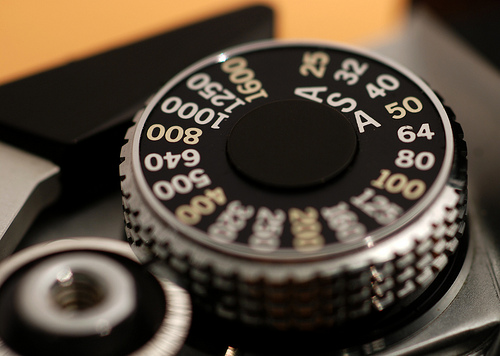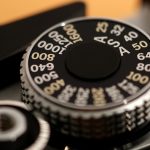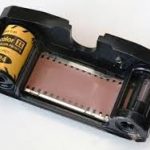
 No light? No photos… just that simple!
No light? No photos… just that simple!
ISO is all about controlling/measuring the amount of light! In film photography, is about controlling the amount of light that enters in the camera when taking a photo.
Light can variate a lot when composing photos, and, if we were diligent and know how to control the ISO (among other factors), have the right amount of light need to compose a perfect photo… or we can play around and try to regulate the light to create artistic photos… your choice.
To have a clear understanding on how too much light or too less light affect your photos, you must first understand how film works in the presence of light.
Film sensitivity (or Speed)
Film sensitivity is about the speed variation of chemical reaction properties in presence of light.
Chemical reaction of silver halide crystals sensible to light are the material of choice to coat the thin plastic film. The grain, spread and quality (and other several properties) of the chemical coat defines the film’s sensitivity, contrast and resolution (and quality!).
The light gradually darken the exposed film, but the process is very slow. To be of practical use, we need to shorten the time. Instead, we use a very short exposure, which creates a latent image in the emulsion, which needs to be further developed chemically after in a darkroom development lab (see further articles about this subject).
After the development, silver halide crystals are converted in silver metal, due to the chemical reaction with light. This metallic silver forms shadows, to form a negative of the image (light are black, and black are light). There is no need to have more that one layer of silver halide in black and white films, simply because there is no color in.
The grain of the crystals are a by factor due to the increase of sensitivity. The more the sensitivity of the crystals, the more the size of them. This means there must be a balance between the amount of light captured and their crystals spread. More about this subject in other articles.
ISO Scale
So what about the ISO numbers?
ISO Scale area a combination os ASA/DIN scales (other standardisation), and is a technique to rate film speed.
There is some mathematical calculations involving light sensitivity curves and ratios, which we do not talk here due to complexity. If you are interested in, please see Wikipedia article here
The numbers of the ISO speed range from 50, 100, 200, 400… 3200. The bigger the number the faster is the film in capturing light.
As rule of thumb, the worse the light, the faster the film speed we need.
Practical concerns
Slower films have much less grain but need more exposure time, so in still photos there is no problem with slow film speed.
But if we need to photograph motion or can’t control the light, we need to choose higher film speeds.
For normal and informal takes, the ISO speed of choice are 50, 100 or 200, due to the small grain, which allows more grey latitudes. For motion pictures or easy snapshoots, we can choose 200, 400 or 800. In a very dark environments (for example, race cars by night), choosing ISO 1600 or 3200 are normally good choices.
I prefer to use the rule, the more control I can have over the light, the slower film speed I can choose.
Another aspect in related is the amount of pictures we can take with one roll of film.
 Unless we have a camera with interchangeable backs, which allows use different film speeds at same time, we cannot control the ISO of he film, picture by picture. The tradeoff here is to use all the film to the end with similar environments to were the film speed was chosen. In cases with the need to take pictures with different speeds at the same time with no interchangeable back cameras, you must have another camera with other film speed! Very rare, but possible! Almost a Pro requirement!
Unless we have a camera with interchangeable backs, which allows use different film speeds at same time, we cannot control the ISO of he film, picture by picture. The tradeoff here is to use all the film to the end with similar environments to were the film speed was chosen. In cases with the need to take pictures with different speeds at the same time with no interchangeable back cameras, you must have another camera with other film speed! Very rare, but possible! Almost a Pro requirement!

